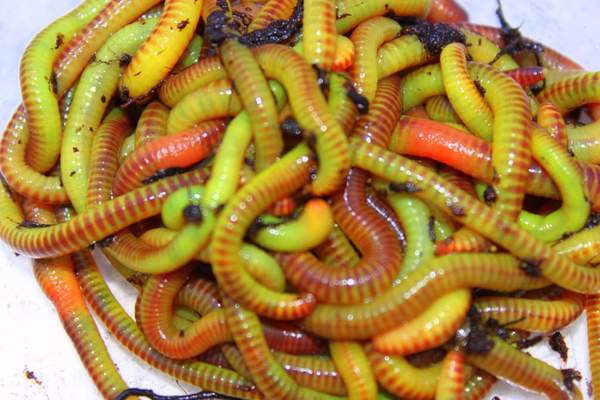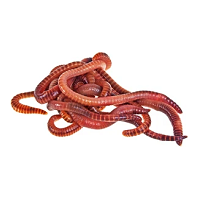Indicators on Where To Find Red Wigglers You Should Know
Indicators on Where To Find Red Wigglers You Should Know
Blog Article
Where To Find Red Wigglers Can Be Fun For Anyone
Table of ContentsFascination About Where To Find Red WigglersEverything about Where To Find Red WigglersExamine This Report about Where To Find Red WigglersThe 10-Minute Rule for Where To Find Red WigglersSome Known Factual Statements About Where To Find Red Wigglers Not known Incorrect Statements About Where To Find Red Wigglers
For best results, you want to fire for about 60-70% wetness level. At the ideal moisture degrees which is simply under 70% that handful ought to hardly produce one decline of liquid.
The Indian Blue is ravenous, yet likewise chooses a warmer climate and it also displays a propensity to get away the container. The red wiggler is a durable worm and isn't as fussy concerning its climate. I such as to call it the Ford Taurus of vermicomposting worms; you will not boast to your hardcore composting friends that you own them, however they will certainly offer you well.
As Faucet showed, a fishermen can do a great bargain to make a worm extra appealing.
The Best Guide To Where To Find Red Wigglers
I assume you will as well if you try them. The smaller the trout stream, the far better worms work is an axiom that hasn't altered in the 100-plus years considering that Perry wrote his write-up. Anglers of his period merely stuck their weak fishing pole via alder tangles and went down a heavy worm right into a deep opening.
Morning is prime feeding time, and the weightless lure's slow-moving descent leaves 5 inches of squirming healthy protein in complete sight for rather a while. After you've made the actors, keep the bail open and placed the rod in a forked stick. The line will certainly diminish the rod in sluggish loops as the worm settles, but typically the sluggish loops will certainly become a blur, and the morning will instantly get instead interesting.
I usually use a whole 'spider, favor marabou dressing, and go down the rod for 2 or three seconds when I get a hit.
And distinguishing base from a bite can be tough. The method is to ease the pole back to the strike (possibly a foot) and really feel for life at the end of the tightening line. If it's there, established the hook with a sweep rather than a jerk. When in a while you'll locate on your own hooked to those slow-moving, hearty tugs, and really feel the weight of a great walleye.
The Of Where To Find Red Wigglers
When the hefty walleyes go on to the big-water shoals in the late summer, attempt pursuing them with a bucktail jig and a 1-inch pinch of nightcrawler. The lure covers the hook factor, disperses weeds, and supplies a taste of target. With absolutely nothing dangling or flapping, it stays safe no matter of existing, casts, or ambitious panfish.
Whether you're wading or fishing from a watercraft, drifting worms is among the fantastic looking approaches for larger rivers. For trout, a spade-dug, 4-inch yard worm is the best dimension; for bass, walleyes, and steelhead, a nightcrawler may be a much better option. The trick is to drift the lure via feeding and holding areas because fish in current are not mosting likely to ferret out the lure, as they may in still water.
Strikes will come as a sharp yank rather than a pull or rap. Fish the shifts: mouths of tributaries, bank-side slicks, and the sides of large pools. As the late Ed Zern, Field & Stream's fantastic satirist, when placed it: Anglers are birthed straightforward but they get over it. His dictum relates to any kind of variety of angling maneuvers, including the issue of including a piece of worm to a damp fly.

What Does Where To Find Red Wigglers Do?
Include a couple of hundred worms and feed them two times a week. Maintain the bed linens moist yet not wet. On the menu: lettuce, fruit and vegetable waste, and the occasional nongreasy important link leftover.
Simply like veggie scraps, you can take your utilized coffee premises and add them to a worm box. Worms like eating coffee grounds.
When the heavy walleyes go on to the big-water shoals in the late summer, try pursuing them with a bucktail jig and a 1-inch pinch of nightcrawler. The bait covers the hook point, disperses weeds, and supplies a taste of target. With nothing dangling or flapping, it continues to be secure regardless of present, casts, or enthusiastic panfish.
The smart Trick of Where To Find Red Wigglers That Nobody is Talking About
Whether you're wading or fishing from a boat, wandering worms is among the terrific searching methods for bigger rivers. Where To Find Red Wigglers. For trout, a spade-dug, 4-inch yard worm is the right dimension; for bass, walleyes, and steelhead, a nightcrawler might be a far better option. The key is to wander the lure through feeding and holding areas due to the fact that fish in current are not mosting likely to ferret out the lure, as they might in still water
Fish the transitions: mouths of tributaries, bank-side slicks, and the edges of large pools. His dictum uses to any type of number of angling maneuvers, including the matter of adding an item of worm to a damp fly.
Increasing your very own lure implies you can slide out of the house and struck the fish pond before Mother comes homejust like in the old days. Here's exactly how to maintain a worm box: Cut a sheet of CDX-grade plywood, which is made with waterproof adhesives, to your measurements. Nail it with each other and pierce a loads 12-inch holes in the bottom for drain.
How Where To Find Red Wigglers can Save You Time, Stress, and Money.
Fill it with shredded newspaper, leaves, peat moss, and soil. Moisten gently. Cover and allow sit for a week. Add a few hundred worms and feed them 2 times a week. Maintain the bed linens damp however not wet. On the menu: lettuce, fruit and veggie waste, and the periodic nongreasy leftover.
Much web like veggie scraps, you can take your utilized coffee grounds and add them to a worm box. Worms like consuming coffee grounds. With the ideal more information conditions and wet, healthy and balanced soil, worms can stay in a container of dust for around three weeks. Shop out of straight sunshine and keep at a temperature in between 50 and 80 levels.
Report this page